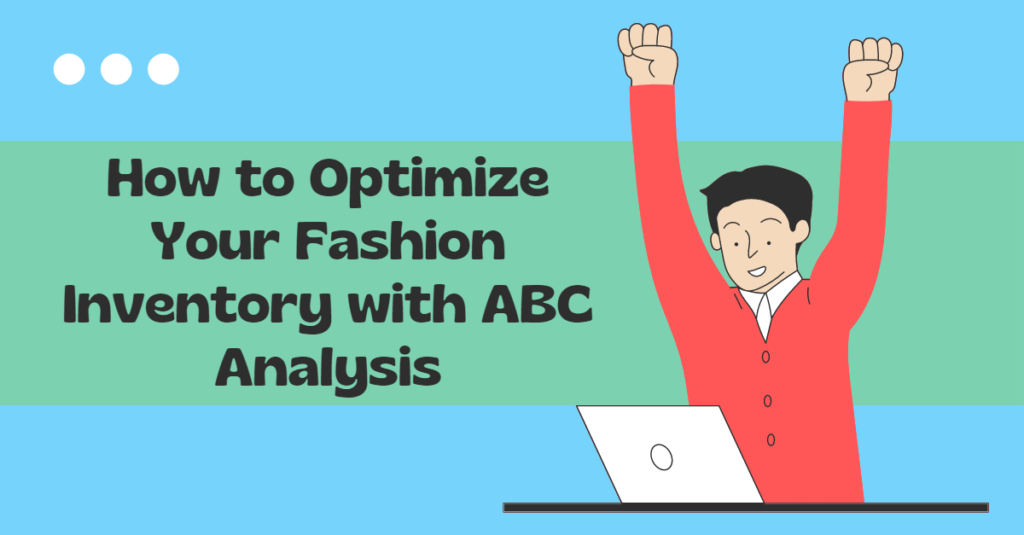As a fashion retailer, managing your inventory can be a challenging task. You need to ensure that you have enough stock to meet demand, but also avoid having too much inventory that could lead to excess costs and potential losses. One of the most effective ways to optimize your fashion inventory is through ABC analysis. This method categorizes inventory items based on their importance, allowing you to allocate resources and make informed decisions. In this article, we will explore what ABC analysis is and how you can use it to optimize your fashion inventory.
What is ABC Analysis?
ABC analysis is a method of inventory categorization that classifies items into three groups based on their value and importance to your business. The three categories are:
- A-items: These are high-value items that contribute the most to your revenue. They typically account for a small percentage of your inventory but generate the majority of your sales. Examples of A-items in the fashion industry could be luxury handbags or designer dresses.
- B-items: These are medium-value items that contribute to your revenue but not as much as A-items. They typically account for a moderate percentage of your inventory and generate moderate sales. Examples of B-items in the fashion industry could be mid-range handbags or premium denim jeans.
- C-items: These are low-value items that contribute the least to your revenue. They typically account for a large percentage of your inventory but generate the least sales. Examples of C-items in the fashion industry could be basic t-shirts or inexpensive socks.
By categorizing your inventory items using ABC analysis, you can prioritize your inventory management efforts and allocate resources accordingly. For example, you can focus on maintaining higher stock levels for A-items to ensure that you can meet demand, while reducing stock levels for C-items to minimize excess inventory and associated costs.
How to Conduct ABC Analysis for Fashion Inventory
To conduct ABC analysis for your fashion inventory, you need to follow a few simple steps:
Step 1: Determine the criteria for classification
The first step in conducting ABC analysis is to determine the criteria for classification. In the fashion industry, the most common criteria are the value of the item and the frequency of sales. You can determine the value of an item by calculating its unit cost, while the frequency of sales can be determined by analyzing sales data over a specific period.
Step 2: Calculate the contribution margin
The next step is to calculate the contribution margin for each inventory item. The contribution margin is the difference between the item’s selling price and its variable cost (i.e., the cost of goods sold). This calculation gives you an idea of the profitability of each item and its contribution to your overall revenue.
Step 3: Rank the items based on the criteria
Once you have calculated the contribution margin for each inventory item, you can rank them based on the criteria you determined in Step 1. For example, you can rank them based on value, frequency of sales, or a combination of both.
Step 4: Assign categories
Finally, you can assign categories based on the ranking. The top 20% of items that generate the most revenue can be categorized as A-items, the next 30% as B-items, and the remaining 50% as C-items.
Tips for Optimizing Your Fashion Inventory with ABC Analysis
Now that you understand the basics of ABC analysis, here are some tips to help you optimize your fashion inventory using this method:
- Focus on A-items
Since A-items generate the most revenue, they should be your top priority when it comes to inventory management. You need to ensure that you have enough stock of these items to meet demand, especially during peak seasons. You can also consider investing in better storage facilities or faster shipping methods to ensure that you can deliver A-items to customers as quickly as possible.
- Manage B-items carefully
While B-items may not generate as much revenue as A-items, they still contribute to your business’s overall profitability. It’s important to manage these items carefully to avoid stockouts or excess inventory. You can use sales forecasting tools to estimate demand for B-items and adjust your inventory levels accordingly. You can also consider offering promotions or discounts to boost sales of these items.
- Minimize inventory of C-items
Since C-items generate the least revenue, you should aim to minimize inventory levels for these items to reduce excess inventory and associated costs. You can consider using just-in-time inventory management to order C-items only when you receive a customer order. This can help you reduce inventory holding costs and free up space for more profitable inventory items.
- Review and update regularly
It’s important to regularly review and update your ABC analysis to reflect changes in demand and inventory performance. For example, an item that was previously classified as a B-item may have become an A-item due to increased demand or vice versa. By regularly reviewing your inventory using ABC analysis, you can make informed decisions about inventory management and improve overall profitability.
- Use technology to automate the process
Manually conducting ABC analysis can be time-consuming and prone to errors. You can use inventory management software to automate the process and generate ABC analysis reports. This can help you save time and ensure accuracy, allowing you to make informed decisions about inventory management.
Conclusion
Optimizing your fashion inventory is critical to the success of your business. ABC analysis is a powerful tool that can help you categorize your inventory items based on their value and importance, allowing you to allocate resources and make informed decisions. By focusing on A-items, managing B-items carefully, minimizing inventory of C-items, and regularly reviewing and updating your ABC analysis, you can improve your inventory management practices and increase overall profitability. With the help of inventory management software, you can automate the process and save time, allowing you to focus on other aspects of your business.

My name is Rohit Vagh and I’m a content writer specializing in fashion and lifestyle. I have three years of experience in this field and have written various articles. My writing style is creative and engaging, and I strive to create content that resonates with my readers. I have a deep passion for fashion and am constantly researching the latest trends and styles to make sure my readers are up to date. I’m excited to continue my career in blogging, and I’m always looking for new opportunities in the fashion and lifestyle space.





